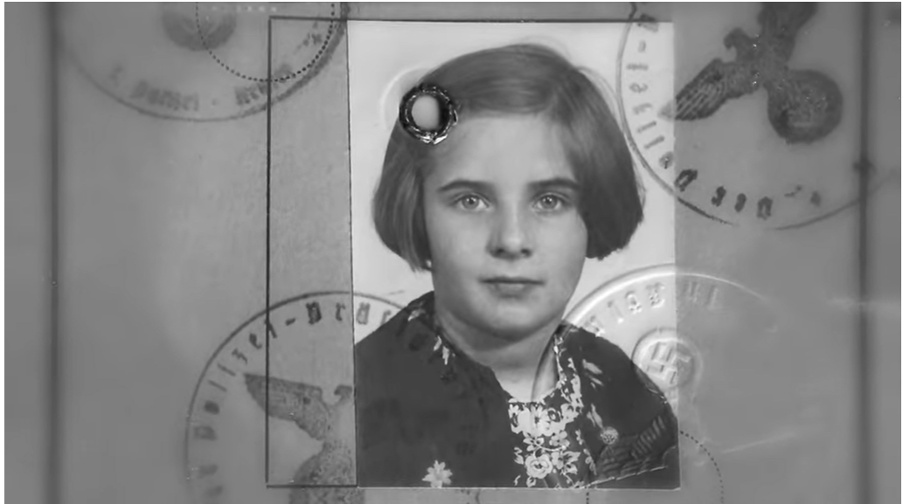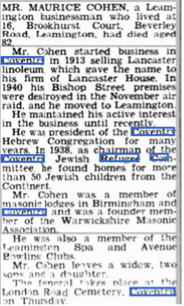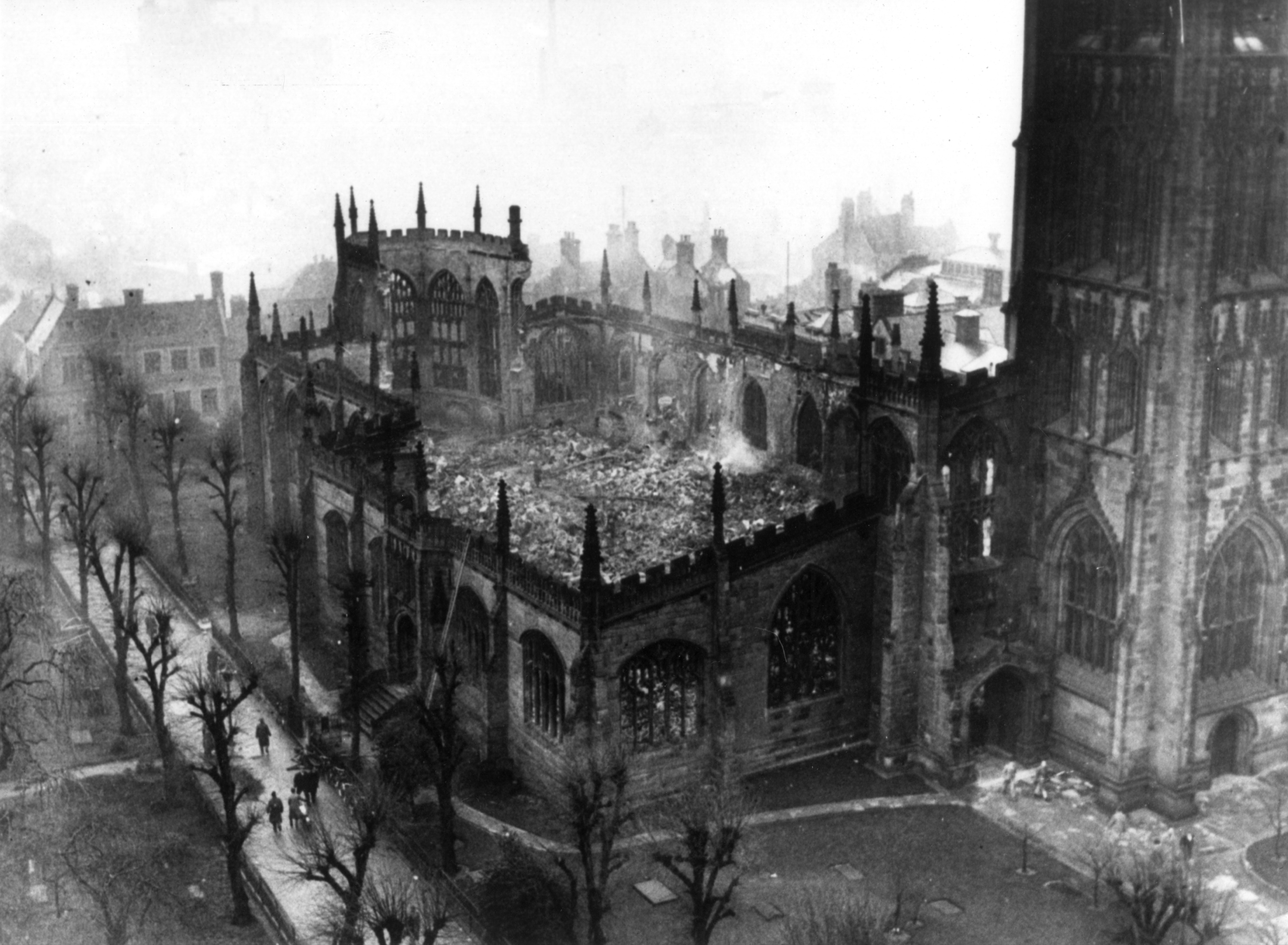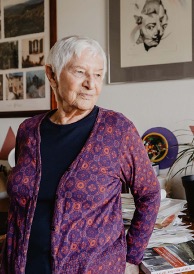Archive Blog: Kindertransport to Coventry
03 February 2023
Author and German Jewish refugee Hanna Miley shares childhood memories of the city in our latest archive blog

Hanna Miley, taken from a snippet of her upcoming documentary, which you can watch online here.
As part of our ongoing efforts to investigate the gaps in our archives, we’ve recently learned about the significance of Coventry during the 1938-40 Kindertransport. This was the organised passage of 10,000 Jewish children via train to escape Nazi persecution – and Coventry played a major role in rehoming – but we have no records of this beyond oral histories. We spoke to Hanna Miley, an author who came to the city in 1939, at just seven years old, who remembers the Midlands as one of the friendliest places she has ever lived.
Hanna grew up in a little German town called Gemünd, and when Nazi rule began to pose imminent danger, her Jewish parents Marcus and Amalie Zack organised her escape. In 1939, Hanna’s train arrived into London Liverpool Street station, where most children had sponsors to greet them. However, Hanna was one of eight children with no contacts, and she had left ‘not knowing what would happen at the other end’. The Coventry Christadelphians, a religious group committed to assisting Jewish refugees, organised for Hanna to stay with a family in Coventry, before being placed more permanently further out in Exhall.
 More research reveals that the Christadelphians established a network for refugees across the Midlands, led by Robert Alan Overton, a shopkeeper from Rugby. Hanna describes Overton as the ‘mover and shaker’ of the group, and he set up hostels for Jewish boys in Birmingham and Rugby, as well as founding the Rugby Refugee Committee. While Overton is strangely absent in our archival records, there is a mention of the Coventry Refugee Committee, chaired by Mr Maurice Cohen of the Coventry Hebrew Congregation. Articles from the Coventry Evening Telegraph record that the commitee rehomed over 50 children, but interestingly, Hanna has no recollection of this group working in the city.
More research reveals that the Christadelphians established a network for refugees across the Midlands, led by Robert Alan Overton, a shopkeeper from Rugby. Hanna describes Overton as the ‘mover and shaker’ of the group, and he set up hostels for Jewish boys in Birmingham and Rugby, as well as founding the Rugby Refugee Committee. While Overton is strangely absent in our archival records, there is a mention of the Coventry Refugee Committee, chaired by Mr Maurice Cohen of the Coventry Hebrew Congregation. Articles from the Coventry Evening Telegraph record that the commitee rehomed over 50 children, but interestingly, Hanna has no recollection of this group working in the city.
While it seems that several groups were working hard to make Jewish refugees feel settled in Coventry, Hanna recalls that at the time it was a bit of a ‘mad scramble’, especially as local people were in a ‘state of anxiety’ about Coventry as a prime target for attacks, due to being an industrial centre. And just months after Hanna’s arrival, the Coventry Blitz occurred, on the 14th of November 1940. Hanna was evacuated to a farm in Warwick in the wake of the tragedy, and recounts being driven through town: ‘my memory is of seeing smoke coming up from the rubble, and the tram lines like huge metal arches – they had been blown up and pulled out of the ground’.
Despite the traumatic nature of this time, Hanna recalls that she had her own method of self-preservation. ‘On the train journey to England I actually remember the moment when I shut the past down’, she said, so that the ‘terror of the bombings’ did not impact her as profoundly. It was only later in life that Hanna was able to make peace with these emotions, which she describes as a ‘faith-healing’, and God reaching out to her. This process was also symbolised by a return visit to Coventry.
Coventry Evening Telegraph, 30 Dec 1969

The ruined cathedral, 1940. Copyright: Coventry Archives
‘If you asked me what my best memory of Coventry was since leaving there, I would say Coventry Cathedral’. While Hanna left with a memory of ‘rubble and smoke’, she greeted the new building as a symbol of ‘what has come to pass in my life: reconciliation with the past’. In the contemporary artworks and design of the space, she recognised people recovering from their hatred of the war and sense of victimhood. Relating this to her own experiences, she states that ‘the movement out of shut-down has been through forgiveness, and I’ve been released out of a prison. For me, Coventry Cathedral symbolises something that took place in my heart, and I can connect with it’.
This reconciliation also inspired Hanna to share her story, and in 2013 she completed her book entitled A Garland for Ashes, describing both her emotional journey to forgiveness, and her physical journey to ‘follow my parents’ steps to their death’. Marcus and Amalie Zack were killed on the 3rd of May 1942, in Chelmno, Poland, and Hanna has found the strength to ‘go back and pray in the places of the biggest hurt’. Writing the book also involved revisiting important places in her Exhall childhood, such as the Old Council School building which was her first English school, now being used as a community centre. Through connecting with Dr Amy Williams, an academic from Nottingham Trent University researching the Kindertransport, Hanna has spoken to neighbours who remember her growing up in Exhall, and new owners who have been captivated by her memories.
We recently marked Holocaust Memorial Day on the 27th of January 2023, with this year’s theme focusing on ‘ordinary people’. Hanna remembers fondly the interactions she had with ordinary people in Coventry and Exhall in her early years, and recounts that in the Midlands ‘there is a kind of friendliness and a lack of pretence that I am so grateful for’. On Holocaust Memorial Day, she shared a virtual message during a presentation given by Dr Williams in Nottingham. She stated that ‘for me to return to the Midlands in this way brings healing to a painful past, but also it inspires me with a sense of purpose, to call us all to speak out about past genocide and to be alert to the present danger’.
[An old person sitting at a table Description automatically generated with medium confidence] Now in her nineties, Hanna is one of the last remaining survivors of the Holocaust. She is an inspiration to Coventry Archives to reflect upon and share testimonies of the Kindertransport and the city’s role in rehoming, even while the records are scant and incomplete. You can find some additional resources below, including a link to Hanna’s book.

Hanna Miley
A Garland for Ashes: World War II, the Holocaust, and One Jewish Survivor's Long Journey to Forgiveness: Miley, Hanna Zack: 9798632414074: Amazon.com: Books
Christadelphians and the Kindertransport - What Did We Know? (recoveringourhistory.com)
Part of the Family (iwaspartofthefamily.com)
Little Thorn Lodge | The UK Holocaust Map
Coventry Cathedral | Coventry Atlas
World War II Bombing | Coventry Atlas